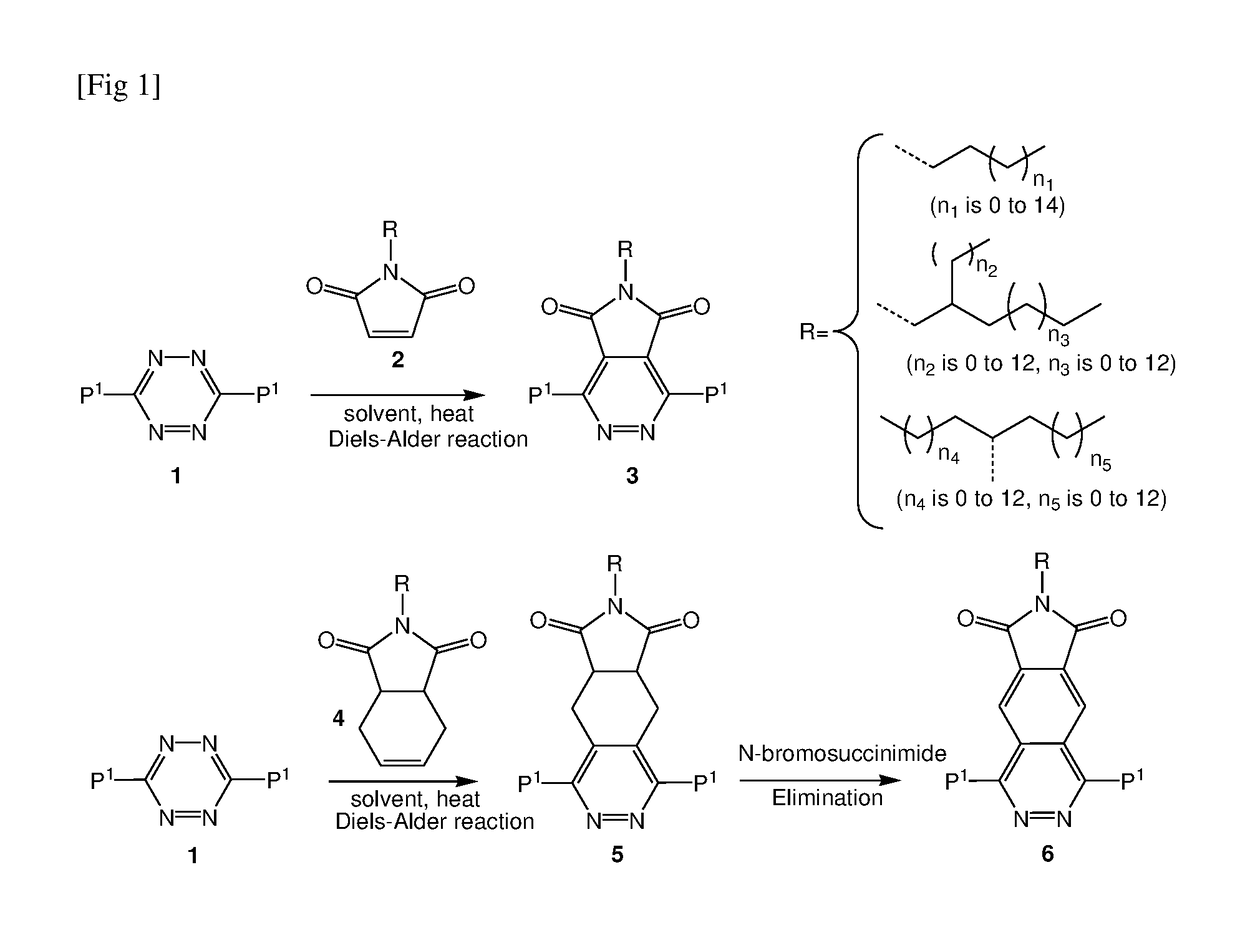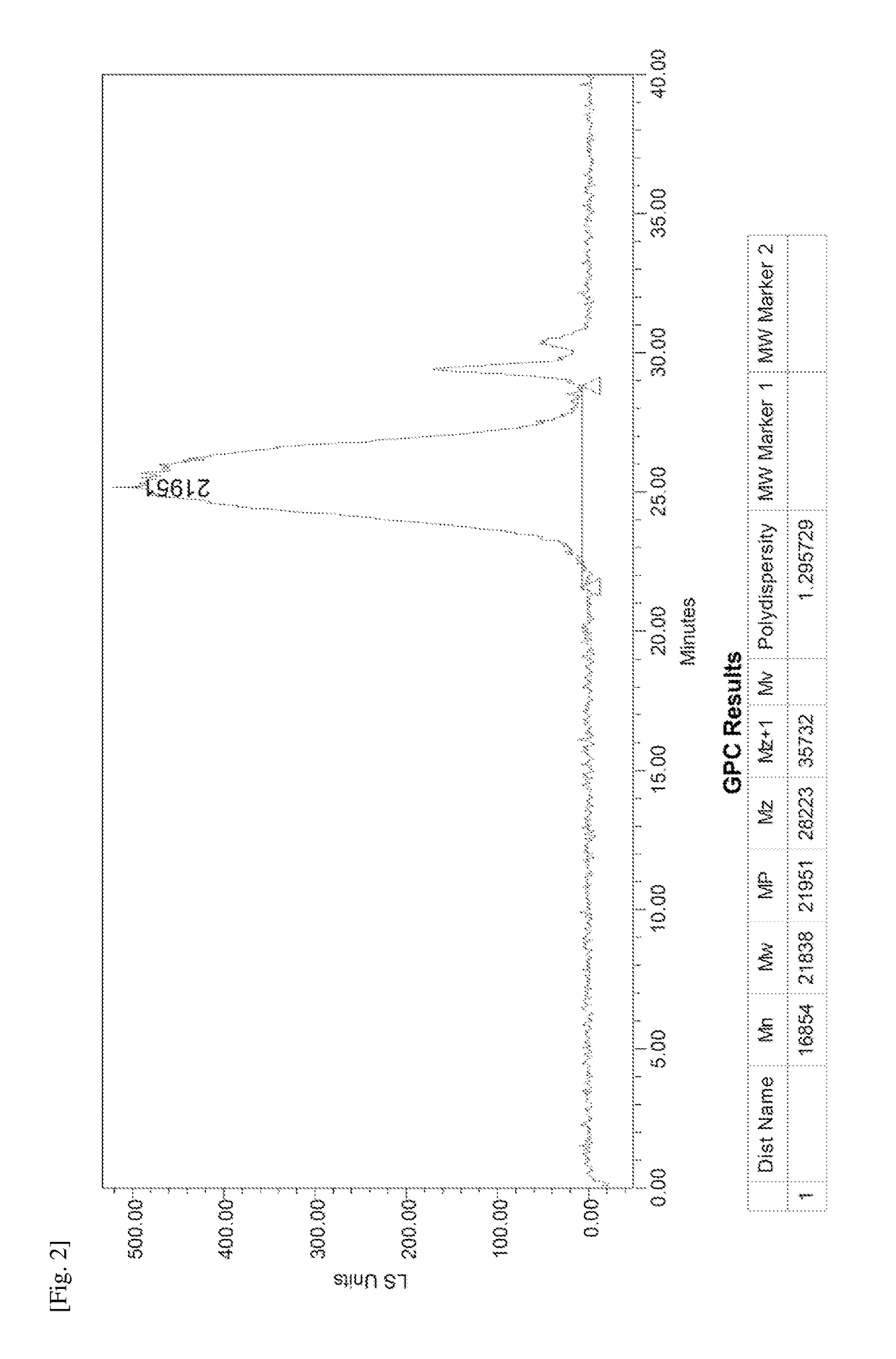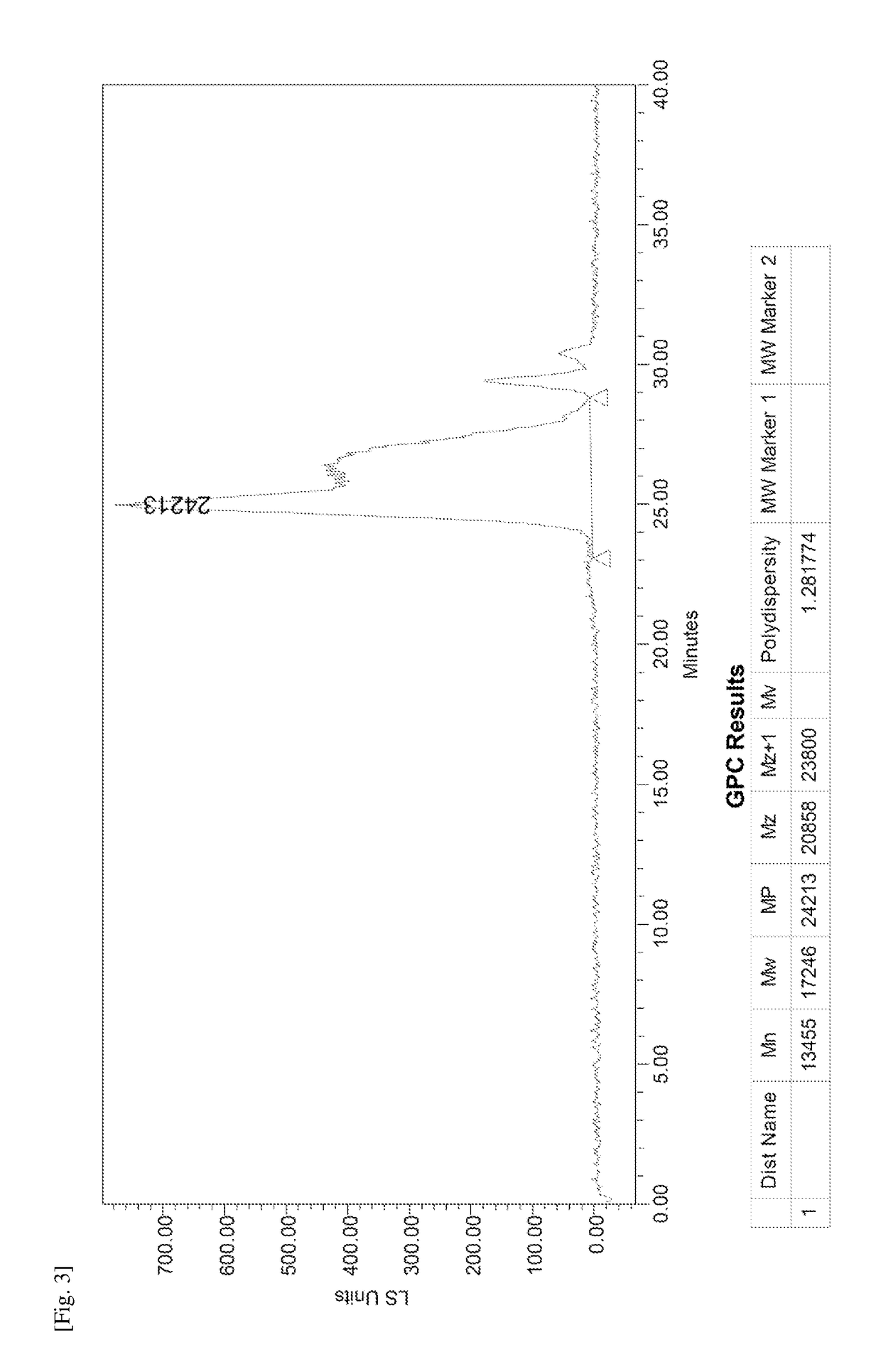Donor-acceptor polymers
a polymer and acceptor technology, applied in the field of compound materials, can solve the problems of conventional challenges, slow commercialization of such devices, and difficulty in inverse-electron demanding diels-alder reactions, and achieve the effects of long shelf life, improved stability, and enhanced processability
- Summary
- Abstract
- Description
- Claims
- Application Information
AI Technical Summary
Benefits of technology
Problems solved by technology
Method used
Image
Examples
example 1
Synthesized Monomers
[0423]Pyridazines
[0424]Pyridazines synthesized having the following structure are shown in Table 1:
TABLE 1Pyradazine monomersMonomer nameP1R2Monomer 1hexylMonomer 2dodecylMonomer 32-octyldodecylMonomer 4hexylMonomer 5dodecylMonomer 62-octyldodecylMonomer 7hexylMonomer 8dodecylMonomer 92-octyldodecyl
[0425]Phthalazines
[0426]Phthalazines synthesized having the following structure are shown in Table 2:
TABLE 2Phthalazine monomersMonomer nameP1R2Monomer 10butylMonomer 112-octyldodecylMonomer 12butylMonomer 132-octyldodecyl
example 2
[0427]Some polymers synthesized from selected monomers in Tables 1 and 2 are shown in Table 3.
TABLE 3Synthesized PolymersPolymer 1Polymer 2Polymer 3Polymer 4Polymer 5Polymer 6Polymer 7Polymer 8Polymer 9Polymer 10Polymer 11Polymer 12
[0428]For all of polymers 1 to 12, b is an integer from 1 to 50.
example 3
Synthesis of the Tetrazine
[0429]The synthesis of a tetrazine precursor 1 is illustrated below:
[0430]3,6-Di(thiophen-2-yl)-1,2,4,5-tetrazine:
[0431]To a dried round bottom flask (1 L) was added 2-cyanothiophene (50 grams, 0.4587 mol), hydrazine (30% concentration, 50 mL), sulphur powder (1.47 grams, 0.04587 mol) and ethanol (200 mL). The mixture was stirred at 70° C. for 3 hours before cooling down to room temperature. Brown crystals were formed at the bottom of the solution. The crystals were collected by suction filtration and washed with cold ethanol (100 mL). After complete drying, the collected crystal was loaded into a dry round bottom flask (1 L). Isoamyl nitrite (107 grams, 0.9174 mol) and chloroform (200 mL) were added into the round bottom flask. The mixture was stirred at room temperature for 6 hours. The solvent was removed by rotary evaporation and the remaining solid was recrystallized in toluene to afford the target compound as a pure red crystal. Yield=47 grams, 84%.
PUM
 Login to View More
Login to View More Abstract
Description
Claims
Application Information
 Login to View More
Login to View More - R&D
- Intellectual Property
- Life Sciences
- Materials
- Tech Scout
- Unparalleled Data Quality
- Higher Quality Content
- 60% Fewer Hallucinations
Browse by: Latest US Patents, China's latest patents, Technical Efficacy Thesaurus, Application Domain, Technology Topic, Popular Technical Reports.
© 2025 PatSnap. All rights reserved.Legal|Privacy policy|Modern Slavery Act Transparency Statement|Sitemap|About US| Contact US: help@patsnap.com



